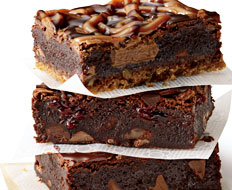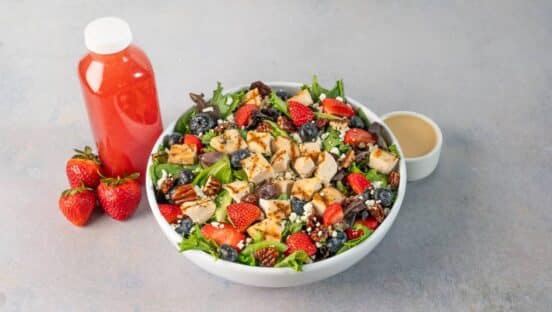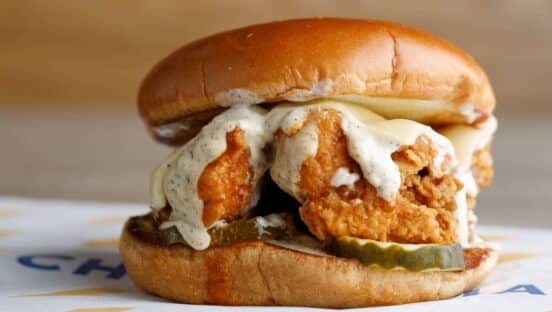In 2012, consumer foot traffic in quick serves remained static during the three main dayparts. While the industry could be helped by an improving economy in 2013 and beyond, operators will benefit if they are able to increase sales between dayparts, which can be accomplished by establishing a robust snacking program.
According to proprietary research from Mintel, the future of snacking appears optimistic. The group forecasts rapid growth of 23.8 percent in this market from 2012 to 2016, due to a strengthening economy coupled with changing consumer attitudes toward snacking. In total, snacking sales are expected to reach $22.9 billion in 2016.
Consumer behavioral trends bode well for snacking. According to Technomic’s 2012 Snacking Consumer Trends report, today’s consumers snack much more frequently than those polled in 2010, due in part to an increasing number of foods and beverages considered to be snacks.
Almost half of the consumers surveyed (48 percent) report consuming multiple snacks on a typical day, compared with a quarter (25 percent) of those polled in 2010. Technomic also concludes that today’s consumers are snacking more out of habit than those polled in 2010, indicating that snacking is becoming a more routine part of consumers’ daily lives. Snacking taps into basic human desires by providing a social activity that can be enjoyed with one’s peers, offering a means of rewarding oneself and giving Americans a break from boredom throughout the day.
Not only are contemporary consumers snacking more often than in years past, they also are snacking more away from home. According to Technomic, there has been a 3 percent increase in out-of-home snacking during the past two years, with nearly 30 percent of consumers snacking away from home. In addition, most snacks are consumed within 20 minutes of purchase.
These trends signify real opportunities for quick serves, which are already the market leaders in the snacking category. According to Mintel, quick-service restaurants rank highest in snacking usage and frequency, with 69 percent of respondents surveyed stating that they had visited a fast-food restaurant for a snack in the past month and an average of 2.7 visits. By comparison, the next most popular snack destination in terms of frequency is coffeehouses, bringing in consumers 1.2 times per month.
National chains are already leading the pack in the snacking category by offering a variety of bites, wraps, smoothies, salads, and other small-portioned items that are great for on-the-go consumption. Here are the steps every quick serve should take to follow their example and maximize revenue from the snacking category.
Offer tasty food at snacked-sized price points
Pricing repeatedly tops the list of considerations when consumers are looking to snack. In fact, consumers tend to be more price sensitive in the snacking arena than they are when considering a meal during a traditional daypart.
According to Technomic, only approximately one-third of consumers (37 percent) say they are willing to pay more for snacks that are fresh and high in quality. Consumers’ household income has little to do with their willingness to spend more on snacks, except among affluent consumers earning $100,000 or more.
The lesson for operators is clear: It is important for your snacking options to be delicious (who wants to eat bad-tasting food?) but not if it means compromising value. If you have to choose between making a premium play or value play, value will win out more often when it comes to snacking.
Reserve some menu real estate
In order to encourage consumers to snack between the dayparts, the category needs to have its own dedicated space on every restaurant menu. Some quick serves market snacking items according to price point; think of the dollar menus that have become ubiquitous on national chain menus. Others will sometimes organize snacks according to general mealtimes, such as “late-night eats,” “morning treats,” and so on. Whatever option you decide on, snacking needs to get some prime real estate on every menu.
Stock a versatile product mix
Snacking is not confined to the hours of traditional dayparts, and consumers look for a variety of different snacking options throughout the morning, afternoon, and night. While early afternoons enjoy the highest snacking penetration, be sure to cover your bases, from baked goods and gourmet coffee beverages in the morning to mini sandwiches and fried fare during late-night hours.
Give consumers (snack) food for thought
The snacking category needs to be supported through marketing, promotions, and communications similar to breakfast, lunch, and dinner. Use trusted techniques—such as coupons, combo deals, advertising, and LTOs—in addition to newer innovations, such as social media deals, to steer consumers towards snack items and reinforce developing behavior patterns.
The trend toward snacking presents quick-service restaurants with a big opportunity to expand market share in a growing category and hedge against the tepid growth of foot traffic during traditional dayparts. If operators play their cards right, they stand to reap financial benefits for years to come.











